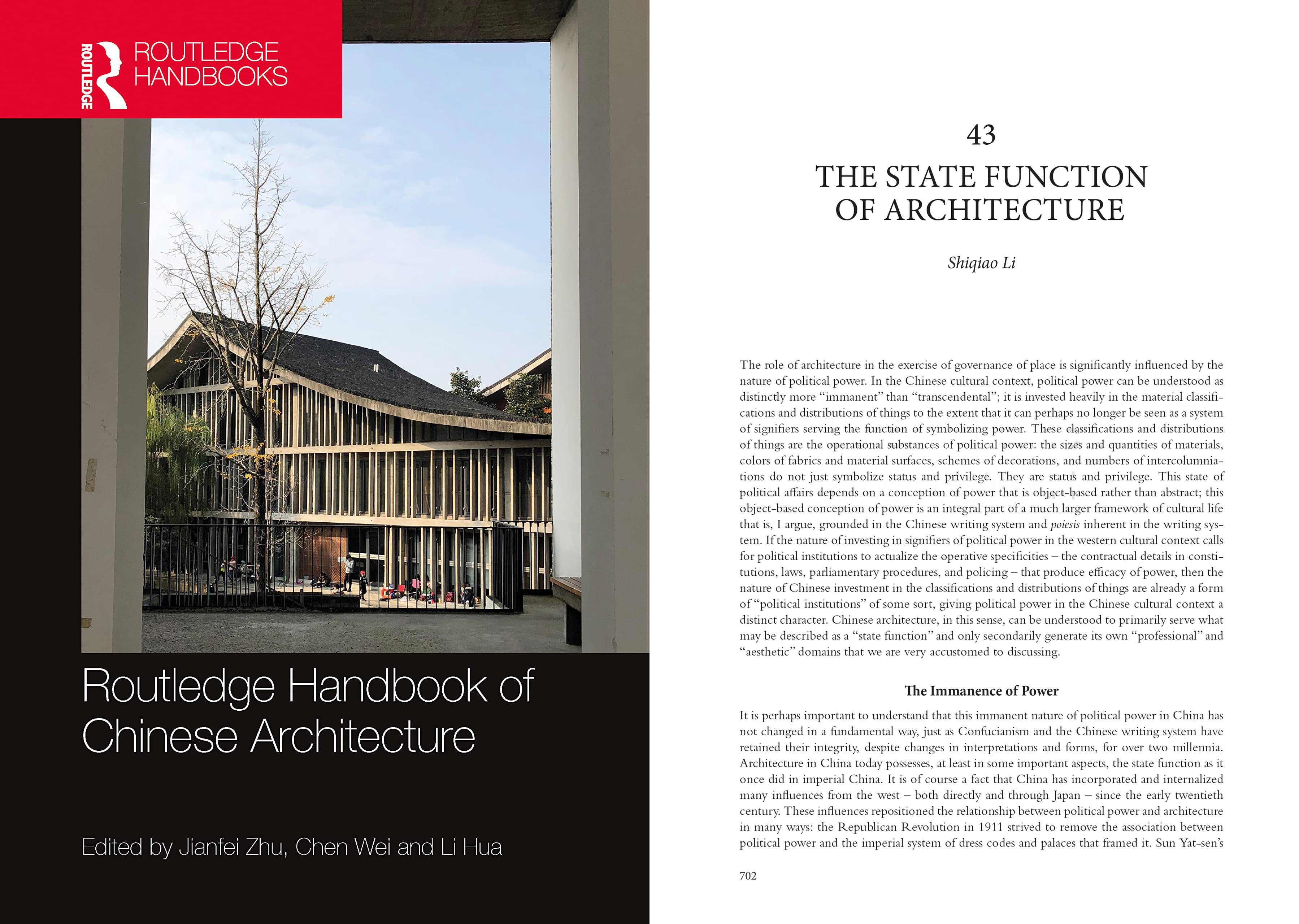
The State Function of Architecture
Shiqiao Li
Architecture as a class of things that are capable of hosting aesthetic qualities is something that should not be seen as universal; rather, it is a specific tradition connected with how the ancient Greeks saw architecture. This chapter argues that architecture in China serves a state function through its materiality: sizes of building materials, dimensions of intercolumniations, and colors of ornamentations. In this context, very little is left to abstraction of aesthetic principles; political power and social hierarchy are enunciated in the material dimensions. The state is immanent in physical substances. How does this condition affect the production of architecture? What are the possible futures for Chinese architecture if this was the traditional framework?
Find the book on the publisher’s website.
Shiqiao Li
Architecture as a class of things that are capable of hosting aesthetic qualities is something that should not be seen as universal; rather, it is a specific tradition connected with how the ancient Greeks saw architecture. This chapter argues that architecture in China serves a state function through its materiality: sizes of building materials, dimensions of intercolumniations, and colors of ornamentations. In this context, very little is left to abstraction of aesthetic principles; political power and social hierarchy are enunciated in the material dimensions. The state is immanent in physical substances. How does this condition affect the production of architecture? What are the possible futures for Chinese architecture if this was the traditional framework?
Find the book on the publisher’s website.
